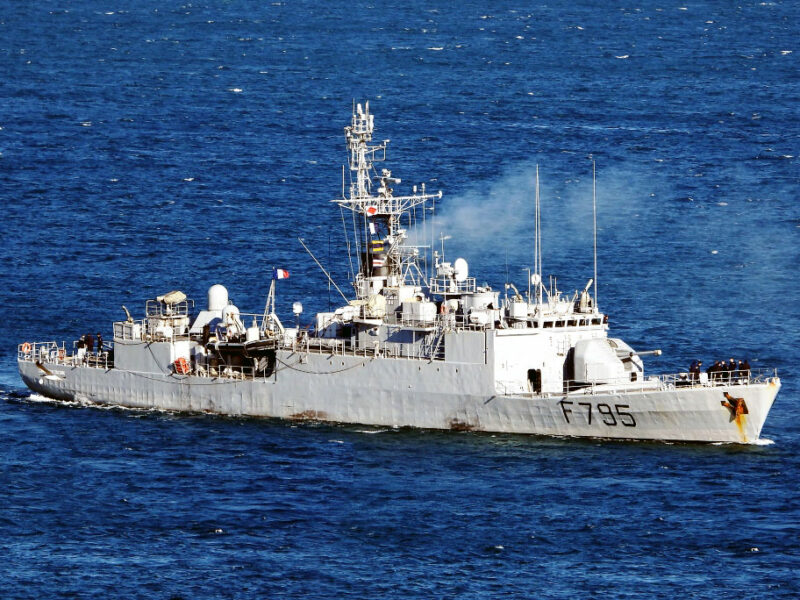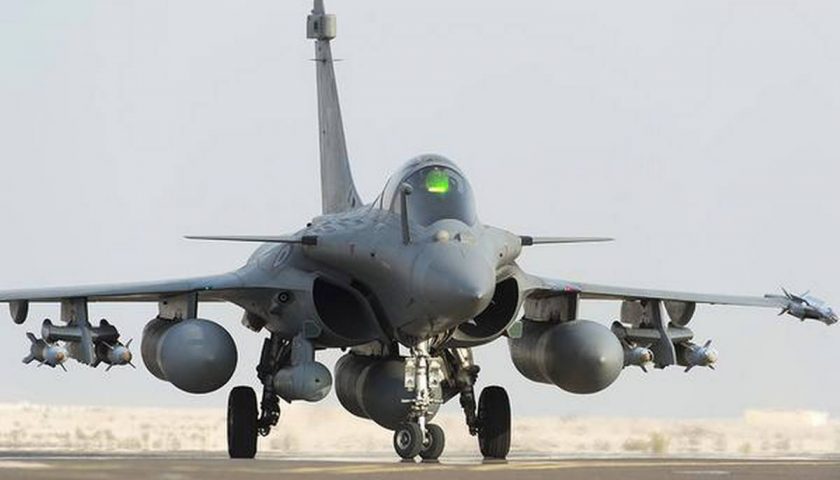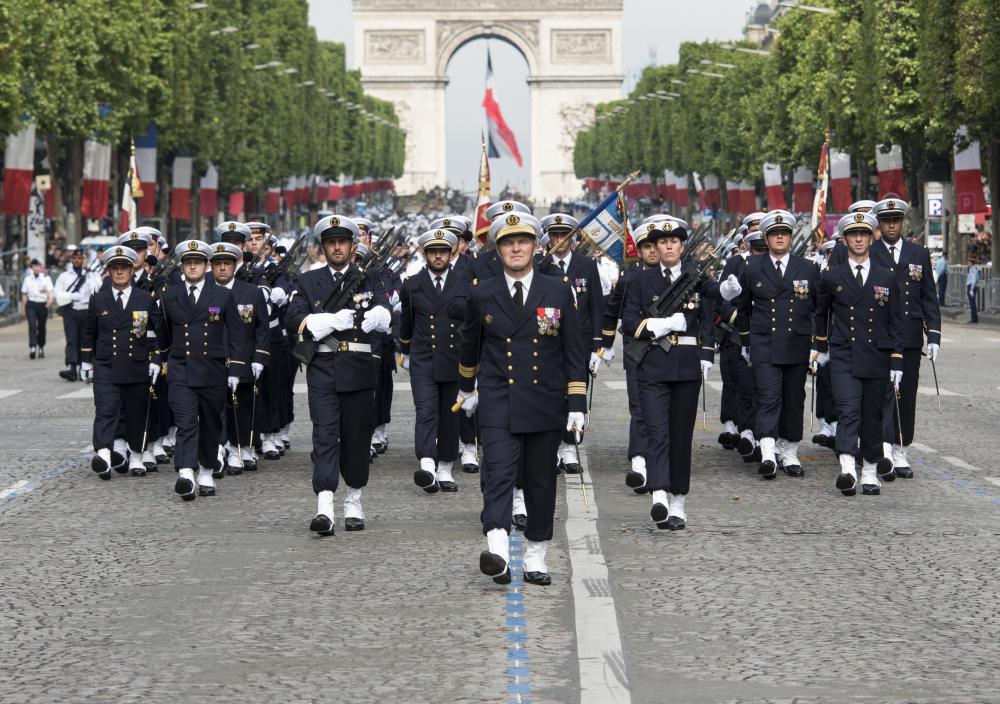The execution of the French Military Programming Law 2019-2025 to date has been, in the opinion of all observers, exemplary. Indeed, it scrupulously respected the planned budget increases, constituting a first since the exercise was set up.
Thus, the army budget in 2017 was only €32,7 billion, after fifteen years of critical under-investment, having brought the French armies to the brink of implosion. In fact, the additional credits allocated have made it possible to bring the budget of the armed forces to €43,9 billion in 2023, an increase of €11,2 billion or 34% compared to the 2017 budget.
And if the next LPM 2024-2030 respects the lines announced, the 2024 budget will then reach €46,9 billion, i.e. 43% more than it was when President Macron arrived at the Elysée.
However, if the morale of the soldiers has apparently improved over this period characterized by a major effort for military condition, the format of the armies seems to be stagnating, and even the replacement of certain equipment which has already largely played overtime, such as the A69 deep-sea patrol boats of the French Navy, the KC-135 of the Air and Space Force, or even the AUF1 self-propelled guns and gazelle helicopters of the Army, still seem to be bound to encounter certain difficulties during the next LPM.
Why, with such a budget increase, are the armed forces still struggling to initiate programs to renew obsolete equipment, and are they refusing any notion of a significant increase in format for the next LPM, which should nevertheless make it possible, by applying linear budget growth as before, to reach an annual budget of €68 to 69 billion in 2030, i.e. an increase of almost 108% in 13 years?
As is often the case, there is not just one cause for this state of affairs, which is mainly based on two factors that significantly deteriorate the effectiveness of the effort made to give back to the armies the credits and the means necessary for their missions. The first is none other than the direct consequence of 20 years of under-investment in the renewal of equipment, partly offset, but only partly, by a severe downward revision of the format of the armies.
The second results directly from the way in which the LPM is designed, namely a multi-annual program expressed in current Euros, and therefore unable to absorb severe economic variations, such as the return of inflation observed in 2022 and 2023, which has, so to speak, neutralized the budgetary effort made since 2017.

The consequences of a budget in chronic under-investment in the Armies
On average, major military equipment, such as those acquired within the framework of Major Effects Programmes, has a service life within armies of 30 to 35 years. Thus all the ships of the French Navy, but also the aircraft of the 3 armies, or the armored vehicles of the Army, remain in service over a period exceeding 30 years.
However, on the basis of the format of the armies defined by the 2013 White Paper, the total value of the equipment in service within the 3 armies, despite a new shave in the numbers, the units, and consequently, in the equipment required to meet the operational contract, is around €240 billion expressed in € 2023.
With a lifespan of 30 years, it is therefore necessary to invest €8 billion each year, on average, in programs with major effects and development efforts, to ensure a smooth renewal of the armed forces' equipment fleet. This is now the case, but over the previous twenty years, this effort was only €4 billion per year on average, i.e. a deficit of 40% and €4 billion per year, for around twenty years from 2000 to 2020, on the altar of the benefits of peace.
Over the same period, paradoxically, the armies were often in great demand, with numerous external interventions forcing them to over-consume the potential of their equipment. In fact, not only did the armies not succeed in renewing their equipment in a reasoned way, but they had to respond to a major operational activity deteriorating their fleet even more rapidly.
In the end, this resulted in an investment shortfall of nearly €80 billion in 2020, so as to renew all the equipment that should have been renewed over the past 20 years, this largely explaining the lack of resilience of the forces, particularly in the event of a high-intensity engagement, as shown by several recent reports from parliamentarians who are now much more insistent on these shortcomings due to the international context.
As for the military, they have constantly repeated since the mid-2000s that they were obliged to consume their own reserves to respond to operational pressure in the absence of sufficient investments, but they were not actually listened to until the threats became much more pressing and palpable from public opinion.

Under these conditions, we understand that the budget surplus granted during the LPM 2019-2024, even if it is indeed substantial, will have so far only enabled investments in terms of equipment renewal to be brought back to their equilibrium point, i.e. €8 billion per year.
It therefore only allows, today, to renew equipment at a normal rate, that is to say over a rate of 30 years, which explains why, despite its evolution, the budget of the armies today does not allow to consider an increase in format, nor even a rehabilitation of the armies on a short or medium term schedule.
To meet this need, it would be necessary to further significantly increase budgetary efforts, while bearing in mind that most of this effort would initially be directed towards the renewal of obsolete equipment and the repair of damage from the period 2000-2020, which will probably be largely the objective targeted by the next LPM, at least by the military.
How does inflation seriously handicap military investments?
However, in spite of a budgetary envelope set to change very significantly by 2030, this may well not be enough, due to a second important parameter which has reappeared recently, inflation. Indeed, traditionally, LPMs are designed and expressed in current Euros, without taking into consideration other economic parameters such as the evolution of the debt, economic growth and, what seems more embarrassing, inflation.

The rest of this article is for subscribers only
The Classic subscriptions provide access to
all articles without advertising, starting at € 1,99.
Newsletter subscription
Register for the Meta-Defense Newsletter to receive the
latest fashion articles daily or weekly


The Ministry of Defense must create a kitty for the modernization of equipment, in which citizens could invest with a tax credit.
This is not really possible, because it would amount to giving citizens the choice of the use made of their taxes, since it would be a question of replacing a state expenditure financed by taxes, by a tax deduction coming from directly evade the state budget. And if we did this for the armies, why not for schools, hospitals, justice, culture or the protection of wild strawberries)) it would very very quickly be an anarchy without a name..
And if we subscribed our deputies to Meta?……
Perhaps a more reassuring strategic vision could emerge?….
There are some who are 😉
[…] […]
[…] March 20, 2023 3 […]
[…] €68 billion in 2030, compared to €43 billion in 2023. In many respects, this new LPM will make it possible to prolong the reconstruction of the armies begun in 2017, after twenty years of under-investment having seriously deteriorated [… ]
[…] The budget of the French armies was €32,7 billion before the LPM 2019-2025, it now reaches €44 billion, up by €11 billion/year […]